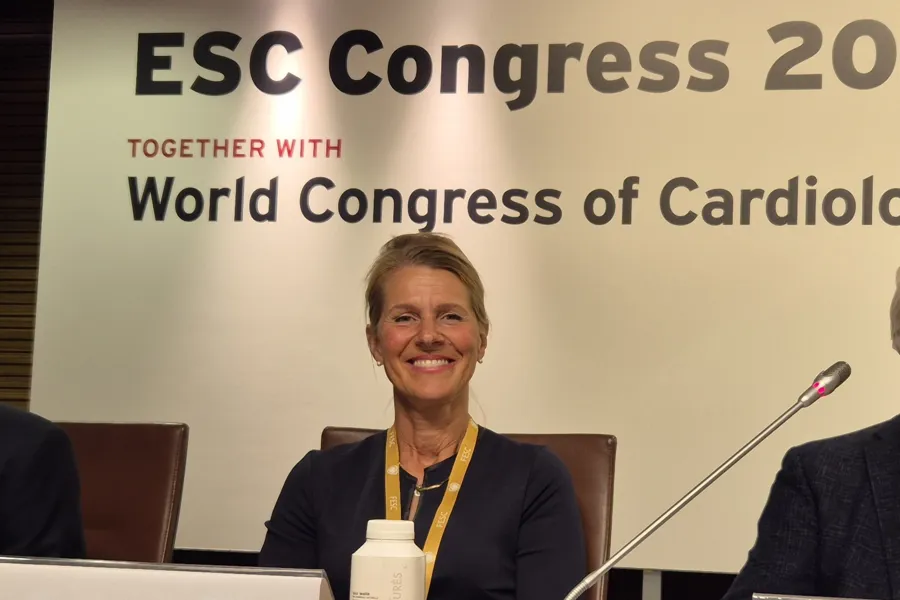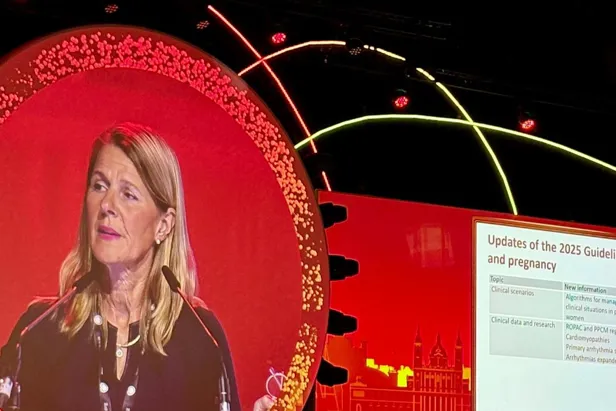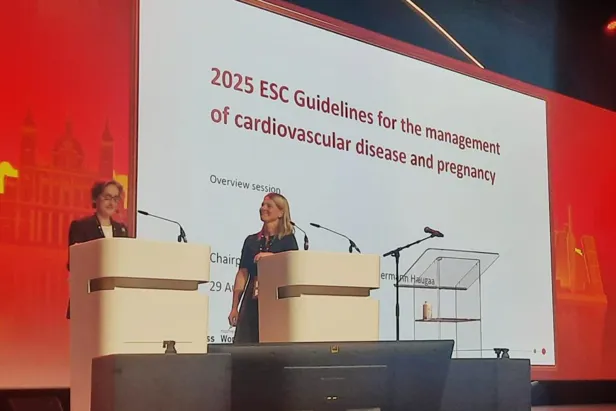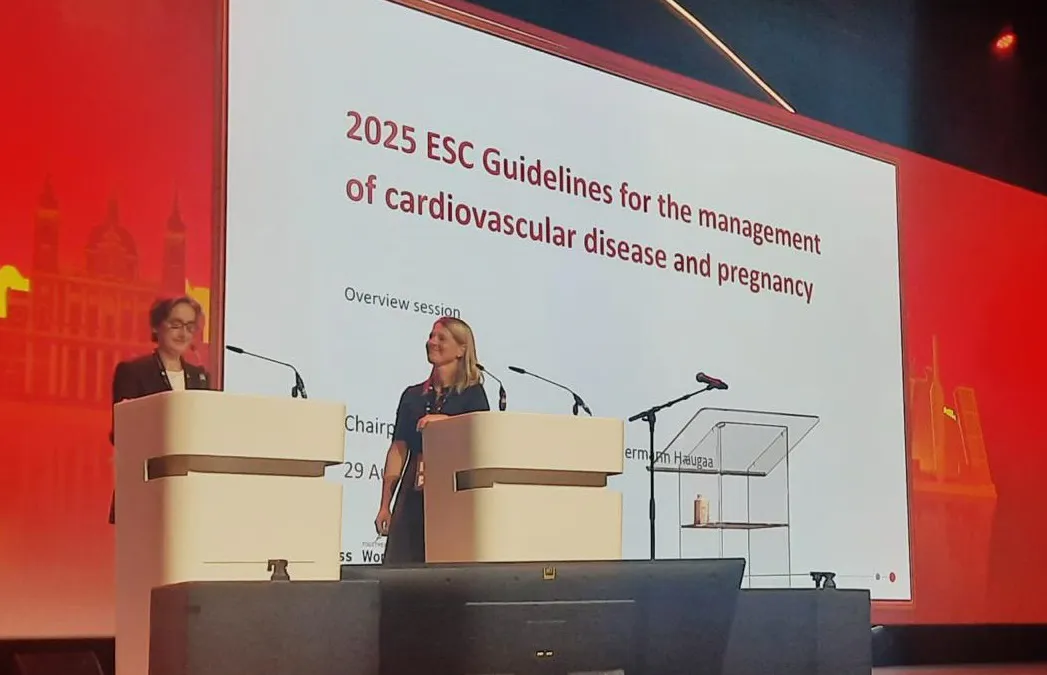OUS leads on new European Guidelines
The new European Guideline for cardiovascular disease and pregnancy was released Friday, August 29, 2025, during the world's biggest conference on heart disease, the European Socieity of Cardiology Congress in Madrid. Simultaneously, the guideline was published in the European Heart Journal. The work on the new guideline has been ongoing for 2.5 years, chaired by Professor Kristina Haugaa from Oslo University Hospital and the University of Oslo, together with Professor Julie De Backer from Belgium. Cardiologists Nina Eide Hasselberg and Mette-Elise Estensen from OUS, were also inovolved in the writing of the guidelines as members of the task-force.

Photo: Siri Holm Solberg
Management by multidisciplinary pregnancy heart teams
The new guideline update the previous version from 2018, and emphasize multidisciplinary follow-up throughout pregnancy and after pregnancy. They contain specific recommendations on how women with known or suspected cardiovascular disease should be monitored before, during, and after pregnancy. A key message is that these patients should be managed by specialized, multidisciplinary pregnancy heart teams—an area where OUS is well advanced by the national unit for cardiovascular disease in pregnancy at the Deptartment of Cardiology, OUS, Rikshospitalet led by Dr Mette Estensen.
This is a significant advancement in cardiology and women's health. We have emphasized practical, applicable advice and tools that can be utilized in clinical settings
Core messages of the Guidelines
-
Preconception Counseling
Women with known or suspected heart disease should receive early and thorough evaluation/assessment, including genetic counseling. -
Multidisciplinary Teams
Treatment of high-risk patients should be carried out by specialized pregnancy heart teams, including cardiologists, obstetricians, anesthesiologists, and other relevant healthcare personnel. -
Pregnancy Risk Classification
The guidelines utilize a modified WHO classification of risk to identify women who need close follow-up and several conditions have been added to the classification in the new guidelines, including cardiongenetic diseases, cardiomyopathies and primary arrhythmias syndromes. -
Specific Conditions
New recommendations are provided for managing genetic heart diseases, arrhythmias, and aortic diseases during pregnancy. -
Practical Tools
The ESC has developed pocket guides, presentation materials, and digital resources for easier implementation.
Accessibility and Dissemination
The entire document is published on the ESC's website, and professional presentations and discussions are also available on ESC 365, the ESC's digital platform.
Recognition of the Norwegian Cardiology Community
The fact that the guidelines are being led from Norway is unique and underscores both the national expertise in cardiology and the increasing focus on women's health in the research and clinical environment at Oslo University Hospital. Professor Haugaa is one of very few Norwegian cardiologists who have had a leadership role in the development of ESC's official guidelines.
It has been a privilege to lead this work. We hope the guidelines will contribute to safer pregnancies and improved outcome and better quality of life in women with heart disease
More information:
- The full text of the guidelines can be found on the ESC European Society of Cardiology website www.escardio.org
- Presentations from the ESC Congress in Madrid are available on ESC 365.
OpenAI ChatGPT service has been used when crafting this summary.



